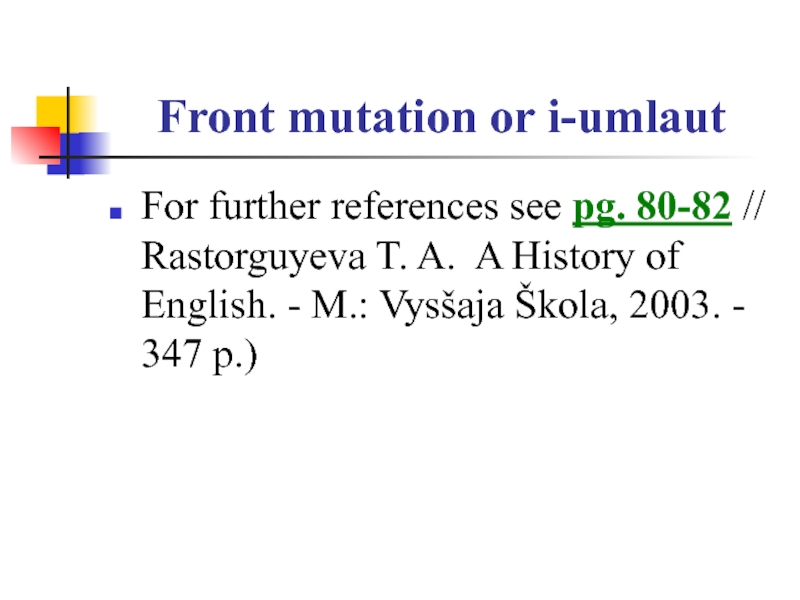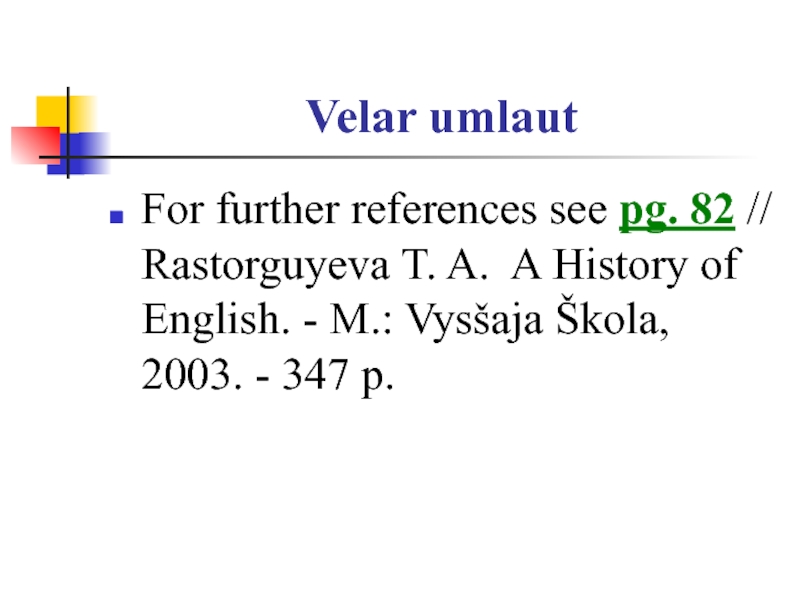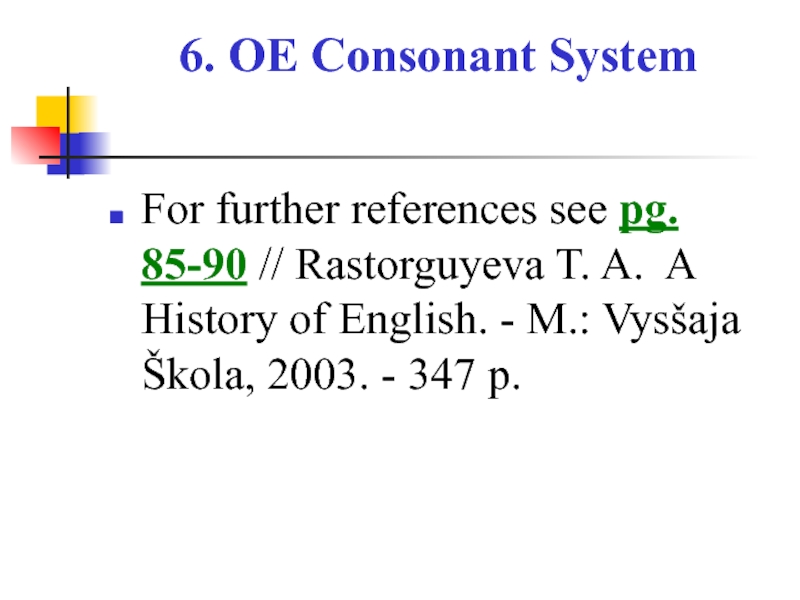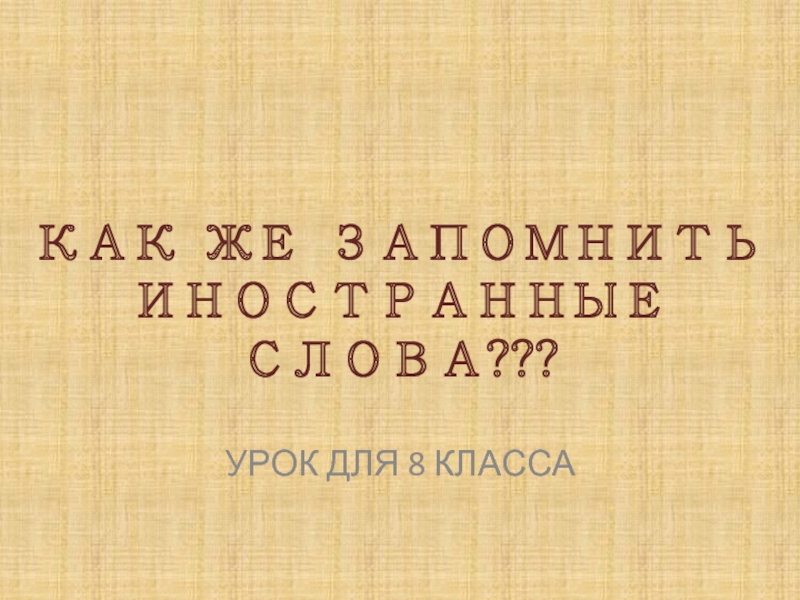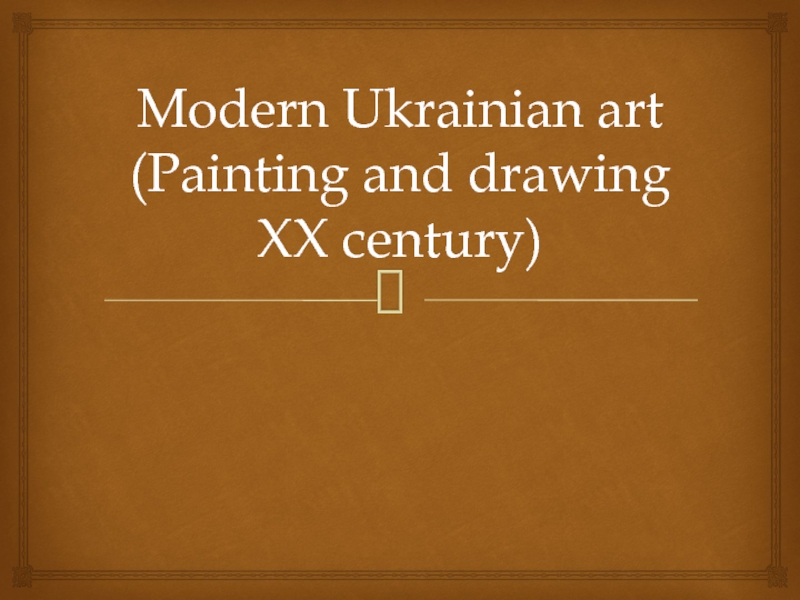- Главная
- Разное
- Дизайн
- Бизнес и предпринимательство
- Аналитика
- Образование
- Развлечения
- Красота и здоровье
- Финансы
- Государство
- Путешествия
- Спорт
- Недвижимость
- Армия
- Графика
- Культурология
- Еда и кулинария
- Лингвистика
- Английский язык
- Астрономия
- Алгебра
- Биология
- География
- Детские презентации
- Информатика
- История
- Литература
- Маркетинг
- Математика
- Медицина
- Менеджмент
- Музыка
- МХК
- Немецкий язык
- ОБЖ
- Обществознание
- Окружающий мир
- Педагогика
- Русский язык
- Технология
- Физика
- Философия
- Химия
- Шаблоны, картинки для презентаций
- Экология
- Экономика
- Юриспруденция
The Germanic Languages. Proto-Germanic. Old English. Phonology презентация
Содержание
- 1. The Germanic Languages. Proto-Germanic. Old English. Phonology
- 2. Principal Features of Germanic Languages
- 3. Principal Features of Germanic Languages
- 4. Proto-Indo-European (PIE) Proto-Indo-European (PIE) - some single
- 5. Proto-Germanic (PG) Proto-Germanic (PG) -
- 6. Proto-Germanic (PG) PG is a highly
- 7. 2. The First consonant shift. Grimm’s Law
- 8. 2. The First consonant shift. Grimm’s Law
- 9. PIE aspirated voiced stops >
- 10. PIE voiceless stops > Gmc voiceless fricatives
- 11. PIE voiced stops > Gmc voiceless stops
- 12. Verner’s Law. The Second Consonant Shift (1875)
- 13. Verner’s Law. Karl Verner showed
- 14. Verner’s Law. PIE f > Gmc
- 15. 3. Periods in the History of English
- 16. Periods in the History of English Old
- 17. 4. OE Heptarchy. OE dialects
- 18. 4. OE Heptarchy. OE dialects
- 20. 4. OE Heptarchy. OE dialects By 700,
- 21. 4. OE Heptarchy. OE dialects In
- 22. Kent Northumbria Mercia (West Midlands) Wessex (central Southern England) East Anglia Essex Sussex
- 23. 4. OE Heptarchy. OE dialects The surviving
- 25. 4. OE Heptarchy. OE dialects Although West
- 26. 4. OE Heptarchy. OE dialects The conversion
- 27. 5. OE Vocalism All living languages undergo changes. What causes such changes?
- 28. Alterations: Qualitative // quantitative; Dependent // independent
- 29. Anglo-Frisian Brightening (or First Fronting). The
- 30. Restoration of a or Retraction Later in
- 31. Restoration of a or Retraction Nominative
- 32. OE Breaking or fracture it is diphthongization
- 33. OE Breaking or fracture Gth. kalds
- 34. OE Breaking or fracture For further references
- 35. Palatal diphthongization OE vowels also change under
- 36. Palatal diphthongization For further references see pg.
- 37. Front mutation or i-umlaut It was a
- 39. Front mutation or i-umlaut Front mutation made
- 40. Front mutation or i-umlaut i-umlaut led to
- 41. Front mutation or i-umlaut For further references
- 42. Velar umlaut For further references see pg.
- 43. 6. OE Consonant System For further
Слайд 2
Principal Features of Germanic Languages
The First consonant shift (Grimm’s Law).
Verner’s Law
Periods in the History of English
OE Heptarchy. OE dialects
OE Vocalism
OE Consonant System
Periods in the History of English
OE Heptarchy. OE dialects
OE Vocalism
OE Consonant System
Слайд 3Principal Features of Germanic Languages
English belongs to:
The Indo-European family of
languages;
The Germanic branch.
West Germanic group
The Germanic branch.
West Germanic group
Слайд 4Proto-Indo-European (PIE)
Proto-Indo-European (PIE) - some single language, which must have been
spoken thousands of years ago by some comparatively small body of people in a relatively restricted geographical area
Слайд 5
Proto-Germanic (PG)
Proto-Germanic (PG) - a dialect of Indo-European all Germanic languages
are descended from;
We have no records of the PG language.
We can reconstruct it (Gothic).
We have no records of the PG language.
We can reconstruct it (Gothic).
Слайд 6Proto-Germanic (PG)
PG is a highly inflected language;
the word stress was put
on the 1st syllable (fixed accent);
PIE verb “bheronom” – PG beranan – OE beran – ME beren, bere – ME bear
PIE verb “bheronom” – PG beranan – OE beran – ME beren, bere – ME bear
Слайд 72. The First consonant shift.
Grimm’s Law
“the 1st sound-shifting”;
after the early
19th c. philologist Jakob Grimm, who analysed it.
Слайд 82. The First consonant shift.
Grimm’s Law
In PIE there was a rich
array of stop consonants;
This system underwent great changes in PG;
It consists of 3 major consonant changes.
This system underwent great changes in PG;
It consists of 3 major consonant changes.
Слайд 9
PIE aspirated voiced stops > Gmc voiced stops
Bh > b
Sans. bharami – ModE bear
Dh > d
Sans. rudhiras – ModE red
Gh > g
Gr. chen – Ger Gans
Слайд 10PIE voiceless stops > Gmc voiceless fricatives
P > f
L. pater – ModE father
T > th
L. dentis – ModE tooth
K > h
L. cornu – ModE horn
Слайд 11PIE voiced stops > Gmc voiceless stops
b > p
L. turba – ModE thorp
d > t
L. dens – ModE tooth
g > k
L. ager – ModE acre
Слайд 12Verner’s Law.
The Second Consonant Shift (1875)
Certain apparent exceptions to Grimm’s Law
were subsequently explained by Karl Verner (a Danish scholar) and others.
Слайд 13
Verner’s Law.
Karl Verner showed that voiceless fricatives became voiced if the
preceding syllable was unstressed, but otherwise remained unchanged.
Latin centum - English hundred.
Latin centum - English hundred.
Слайд 14Verner’s Law.
PIE f > Gmc v
PIE th > Gmc d
Lat pater
– Gth fadar
PIE k > Gmc g
PIE s > Gmc z > r in North and West Germanic) = rotacizm
Gth. raisjan – OE ræran
PIE k > Gmc g
PIE s > Gmc z > r in North and West Germanic) = rotacizm
Gth. raisjan – OE ræran
Слайд 153. Periods in the History of English
Traditionally, the history of the
English language is divided into 3 major periods.
This division was first proposed by an English philologist, Henry Sweet, in 1873.
This division was first proposed by an English philologist, Henry Sweet, in 1873.
Слайд 16Periods in the History of English
Old English (Anglo-Saxon) (5 c.-1066) =
the period of full inflexions;
Middle English (1066 – 1485) = of levelled inflexions;
Modern English (1485 - ...) = of lost inflexions.
Middle English (1066 – 1485) = of levelled inflexions;
Modern English (1485 - ...) = of lost inflexions.
Слайд 174. OE Heptarchy. OE dialects
The earliest inhabitants of the British
Isles, were Celtic speakers.
The Celts had been living in England until being invaded by the Romans in 43 CE. and Latin never overtook the Celtic language.
The Celts had been living in England until being invaded by the Romans in 43 CE. and Latin never overtook the Celtic language.
Слайд 184. OE Heptarchy. OE dialects
About the year 449 AD began
the invasion of Britain by certain Germanic tribes, the founders of the English nation:
Angles, Saxons, Jutes, Frisians
Angles, Saxons, Jutes, Frisians
Слайд 204. OE Heptarchy. OE dialects
By 700, the Anglo-Saxons had occupied most
of England and a considerable part of southern Scotland (but for Cornwall and Wales).
The language of Anglo-Saxons became the dominant one.
The language of Anglo-Saxons became the dominant one.
Слайд 214. OE Heptarchy. OE dialects
In the 7th c. Germanic tribes set
up seven kingdoms called the Anglo-Saxon Heptarchy, rule of the seven kingdoms .
Слайд 22Kent
Northumbria
Mercia (West Midlands)
Wessex (central Southern England)
East Anglia
Essex
Sussex
Слайд 234. OE Heptarchy. OE dialects
The surviving texts form the OE period
are in 4 main dialects:
West saxon! (the literary standard)
Kentish
Mercia
Anglian
Northumbria
West saxon! (the literary standard)
Kentish
Mercia
Anglian
Northumbria
Слайд 254. OE Heptarchy. OE dialects
Although West Saxon became the literary standard
of unified England, it is not the direct ancestor of modern standard English, which is mainly derived from an Anglian dialect
Слайд 264. OE Heptarchy. OE dialects
The conversion of the English to Christianity
began in 597 with St Augustine, and took a century to complete;
With Christianity came writing.
With Christianity came writing.
Слайд 29Anglo-Frisian Brightening
(or First Fronting).
The Anglo-Frisian languages underwent a sound change
in their development from Proto-Germanic by which the vowel ā was fronted to ǣ, unless followed by a nasal consonant (n, m).
Cf. OE mann and OE dæġ
Cf. OE mann and OE dæġ
Слайд 30Restoration of a or Retraction
Later in Old English, short /æ/ (and
in some dialects long /æː/ as well), was backed to /ɑ/ when there was a back vowel in the following syllable.
Слайд 31Restoration of a or Retraction
Nominative dæġ
dagas
Accusative dæġ dæġ
Genitive dæġes daga
Dative dæġe dagum
For further references see pg. 76 // Rastorguyeva T. A. A History of English. - M.: Vysšaja Škola, 2003. - 347 p.)
Accusative dæġ dæġ
Genitive dæġes daga
Dative dæġe dagum
For further references see pg. 76 // Rastorguyeva T. A. A History of English. - M.: Vysšaja Škola, 2003. - 347 p.)
Слайд 32OE Breaking or fracture
it is diphthongization of short vowels before certain
consonant clusters (before r, l, h + consonant and before h final).
It is vowels a and e that underwent fracture.
It is vowels a and e that underwent fracture.
Слайд 33OE Breaking or fracture
Gth. kalds – WS ceald
Breaking produced a new
set of vowels in OE = /ea/ and /eo/.
Слайд 34OE Breaking or fracture
For further references see pg. 78-80 // Rastorguyeva
T. A. A History of English. - M.: Vysšaja Škola, 2003. - 347 p.
Слайд 35Palatal diphthongization
OE vowels also change under the influence of the initial
palatal consonants ʒ [j], c [k’] and cluster sc [sc’].
As a result of palatalization the vowel [e] and [æ] are diphthongized. E.g.:
OE scÆmu > OE sceamu ‘shame’
As a result of palatalization the vowel [e] and [æ] are diphthongized. E.g.:
OE scÆmu > OE sceamu ‘shame’
Слайд 36Palatal diphthongization
For further references see pg. 78-80 // Rastorguyeva T. A.
A History of English. - M.: Vysšaja Škola, 2003. - 347 p.)
Слайд 37Front mutation or i-umlaut
It was a series of changes to vowels
which took place when there was an i, ī or j in the following syllable.
Subsequently, the i, ī or j disappeared, or changed to e.
Subsequently, the i, ī or j disappeared, or changed to e.
Слайд 39Front mutation or i-umlaut
Front mutation made considerable changes in the pronunciation
of English.
Examples of i-umlaut in Mod English: food and feed, goose and geese, tooth and teeth, blood and bleed, man and men.
Examples of i-umlaut in Mod English: food and feed, goose and geese, tooth and teeth, blood and bleed, man and men.
Слайд 40Front mutation or i-umlaut
i-umlaut led to the appearance of new vowels:
[y]
and [y:] arose from palatal mutation;
Diphthongs [ie] and [ie:]
Diphthongs [ie] and [ie:]
Слайд 41Front mutation or i-umlaut
For further references see pg. 80-82 // Rastorguyeva
T. A. A History of English. - M.: Vysšaja Škola, 2003. - 347 p.)
Слайд 42Velar umlaut
For further references see pg. 82 // Rastorguyeva T. A.
A History of English. - M.: Vysšaja Škola, 2003. - 347 p.
Слайд 436. OE Consonant System
For further references see pg. 85-90 // Rastorguyeva
T. A. A History of English. - M.: Vysšaja Škola, 2003. - 347 p.
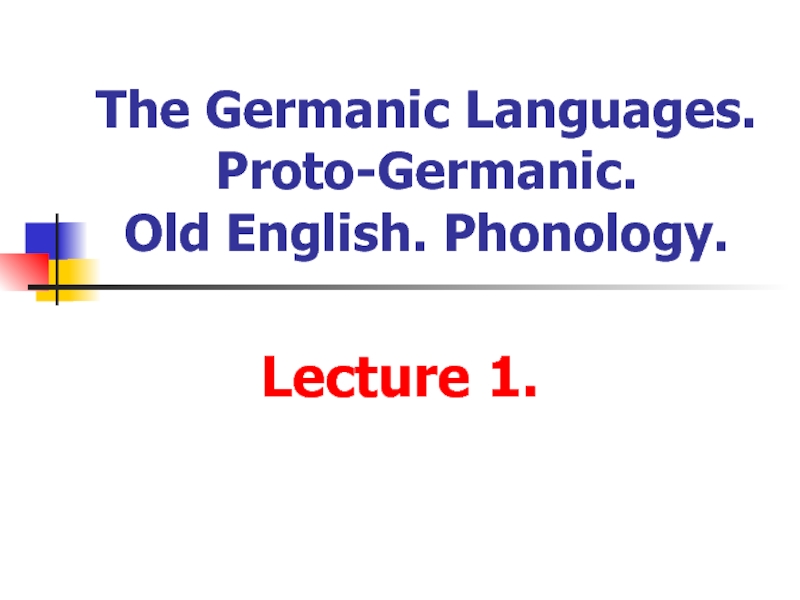
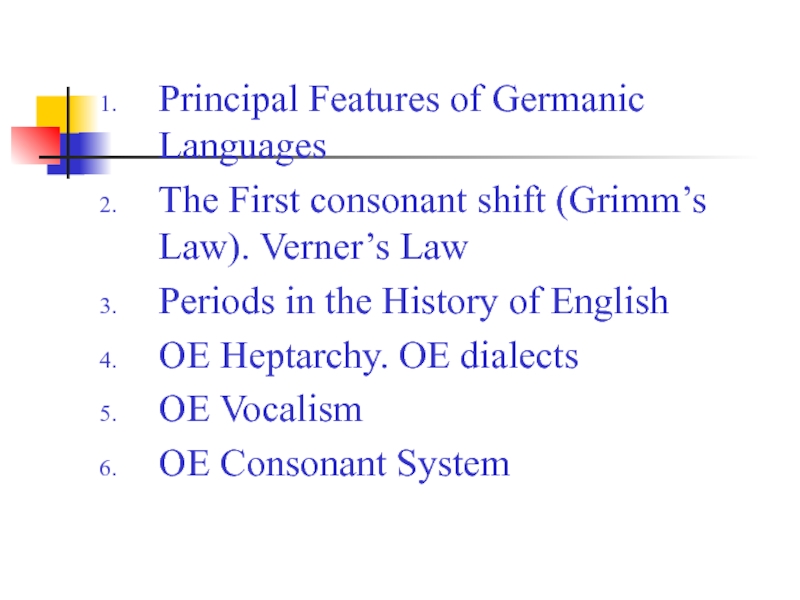
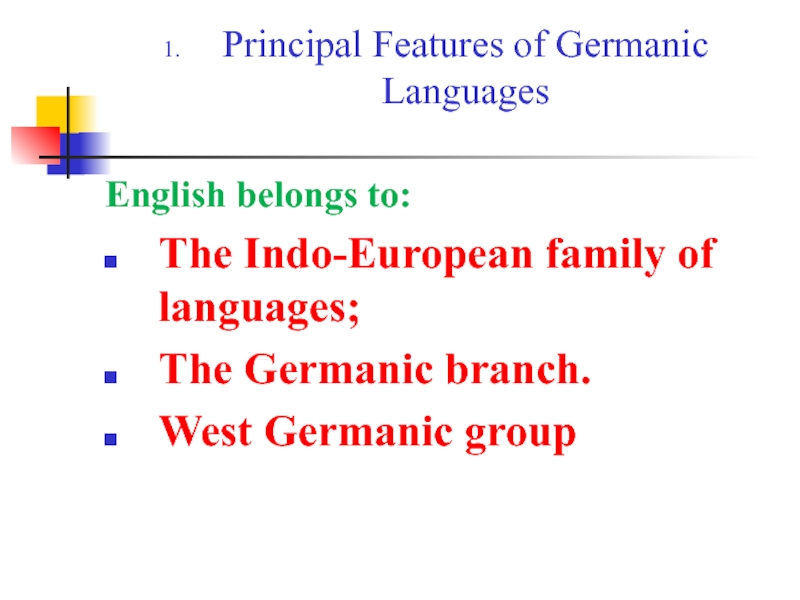
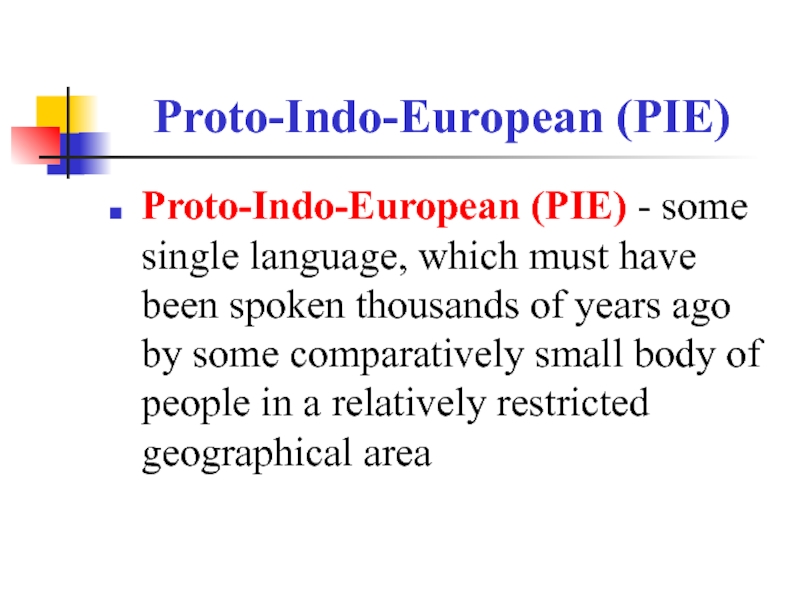
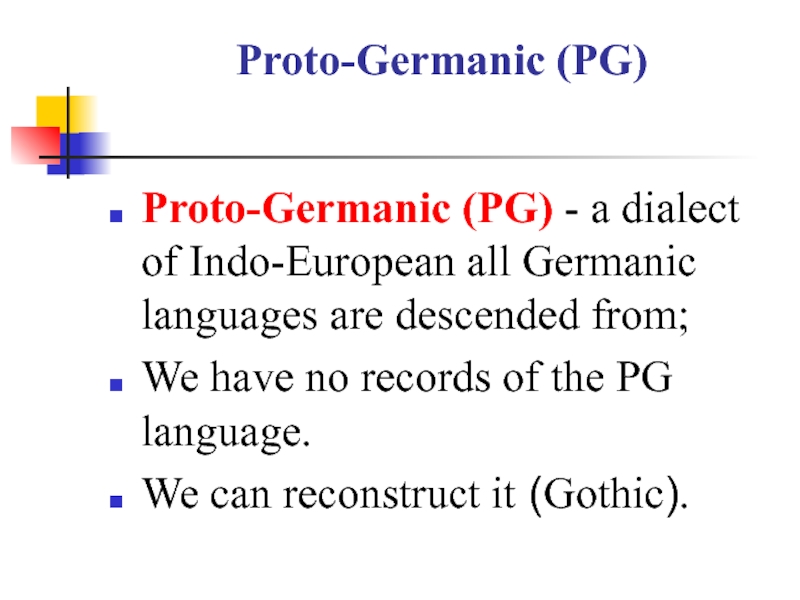
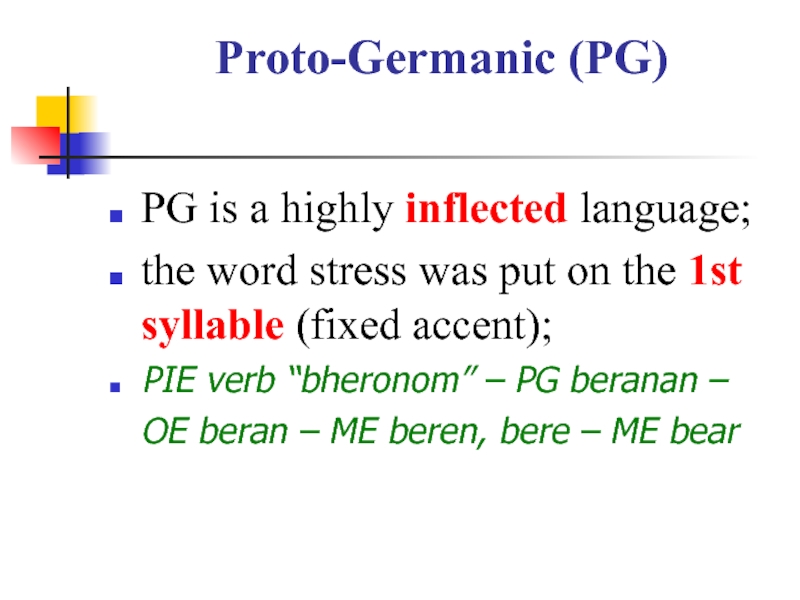
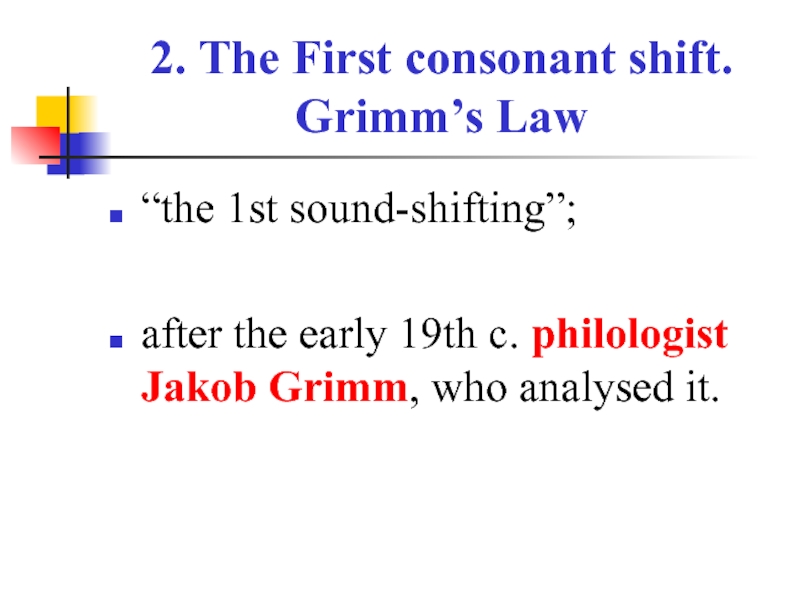
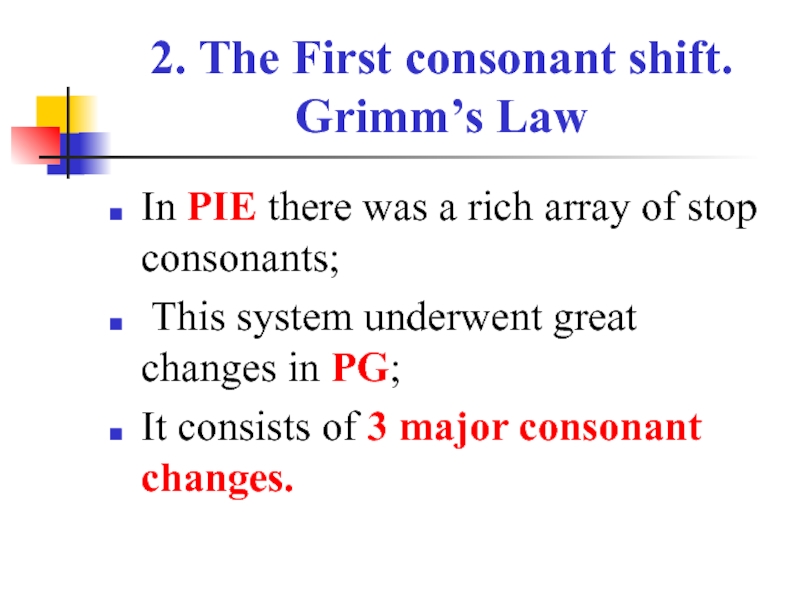
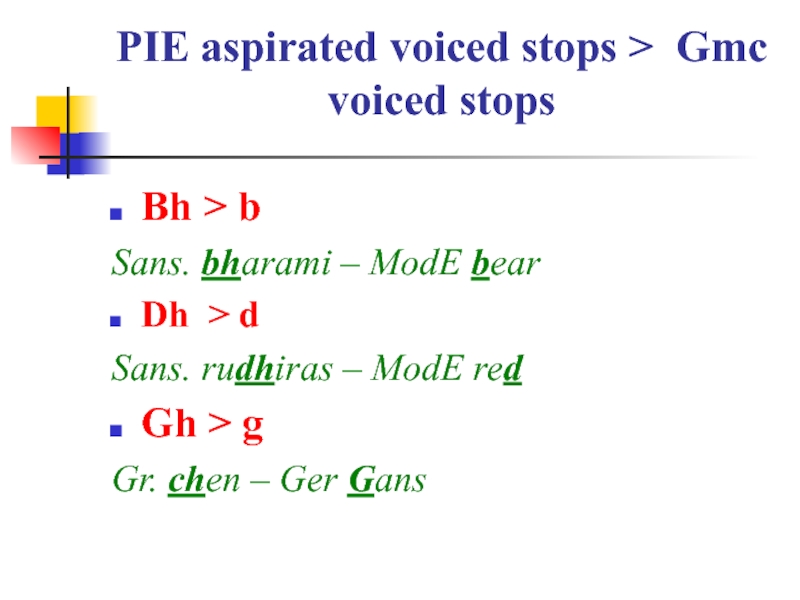
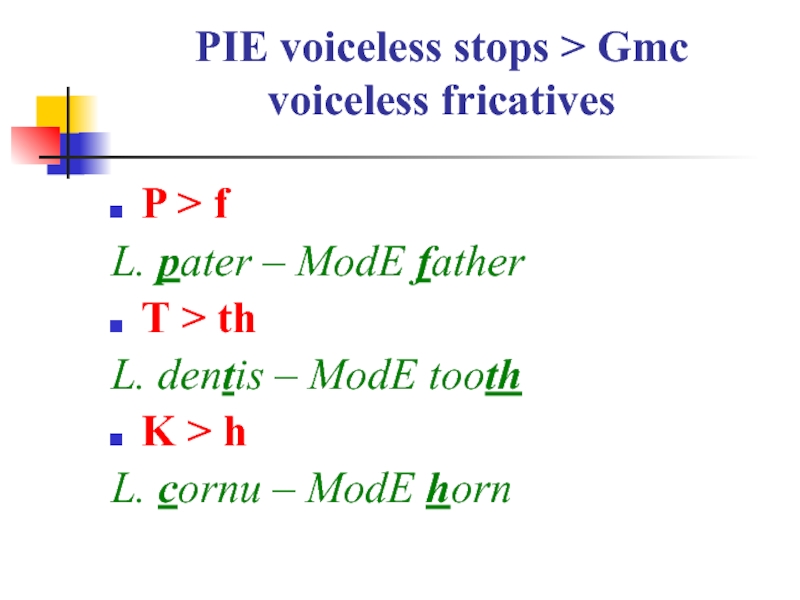
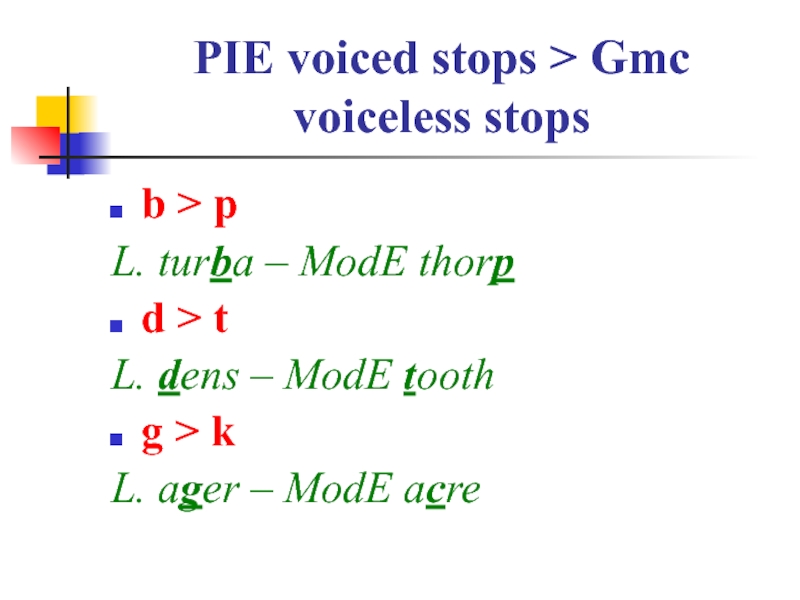
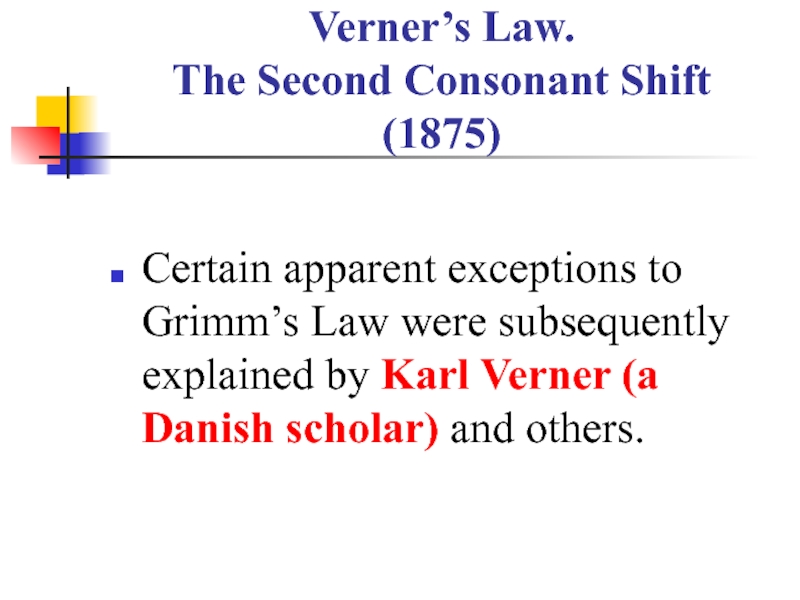
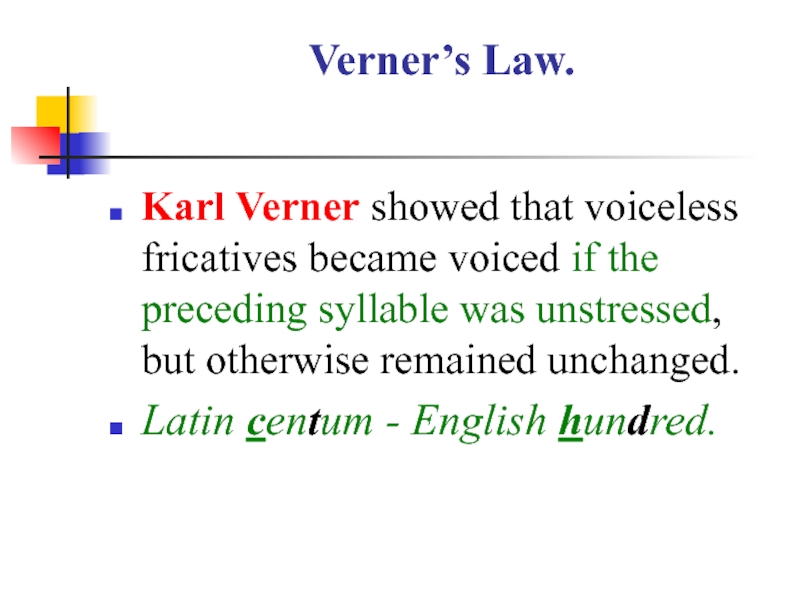
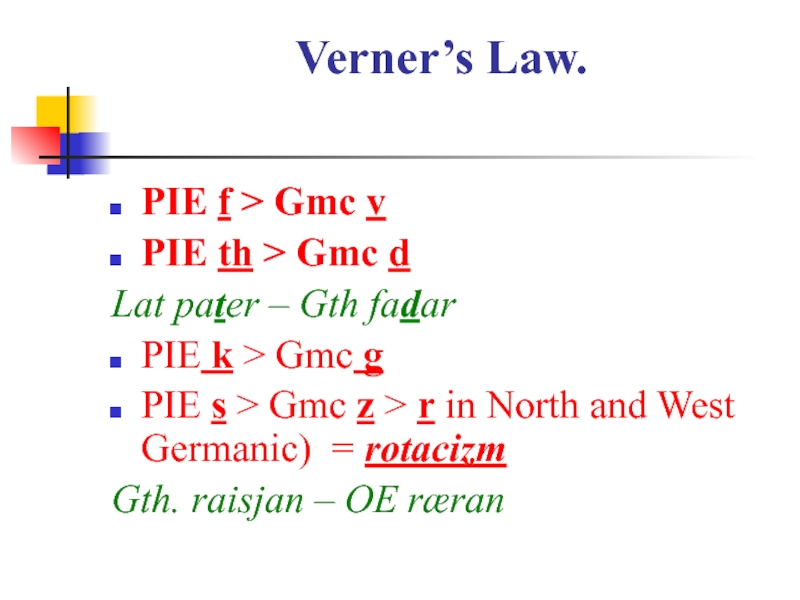
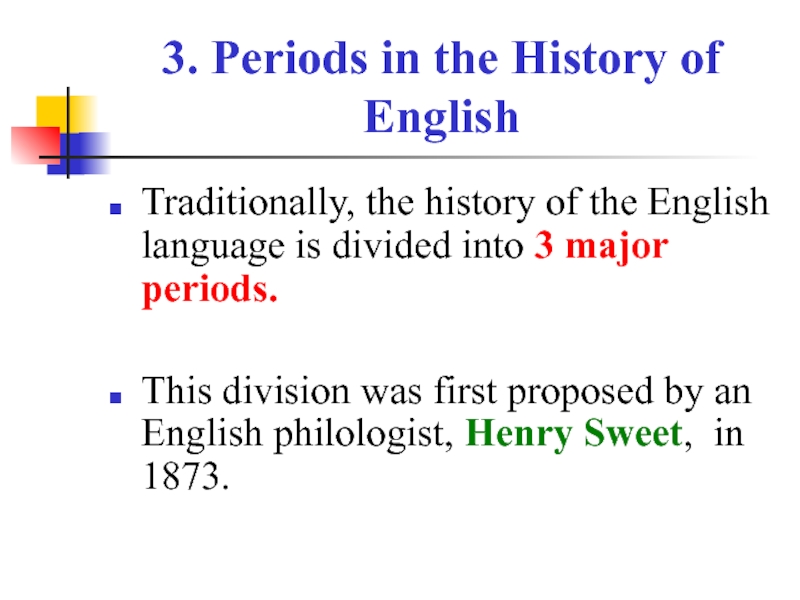
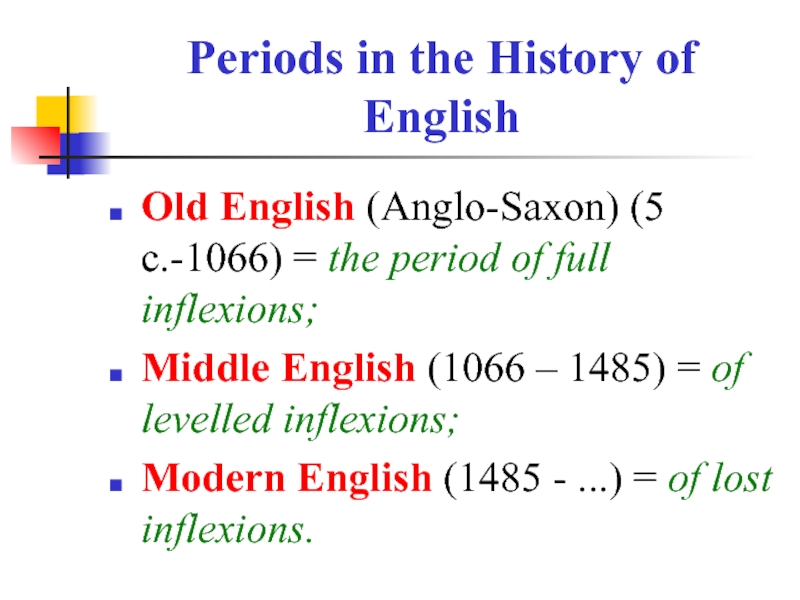
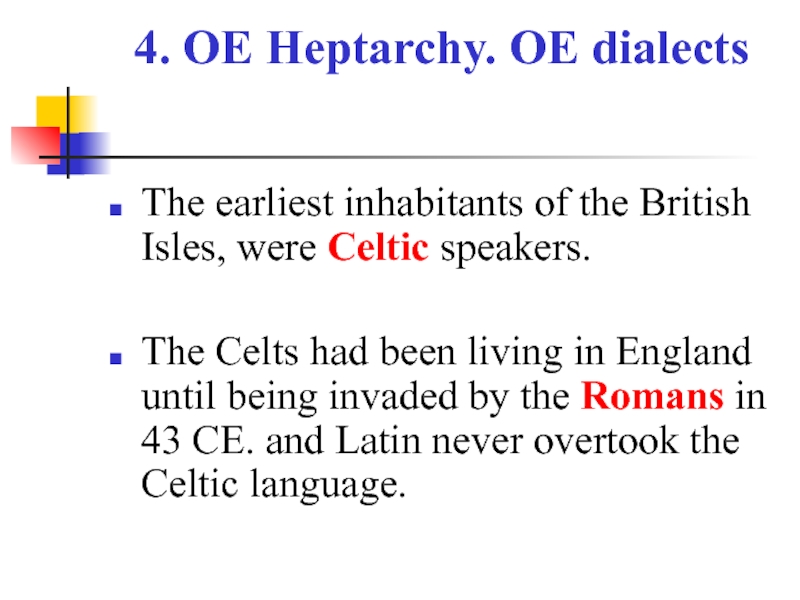
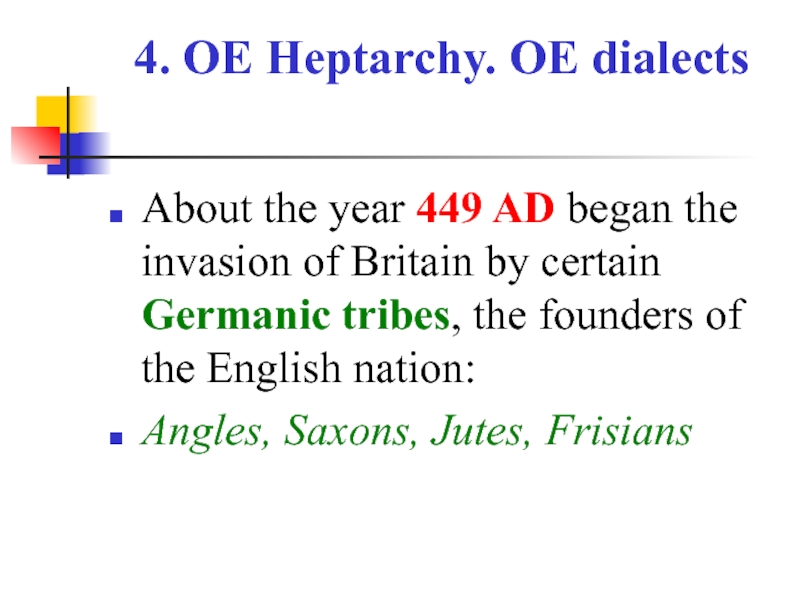
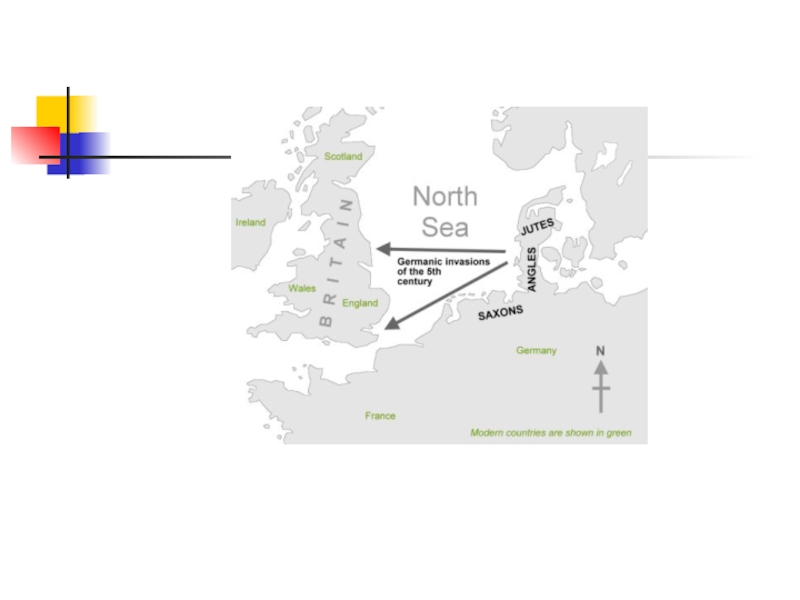
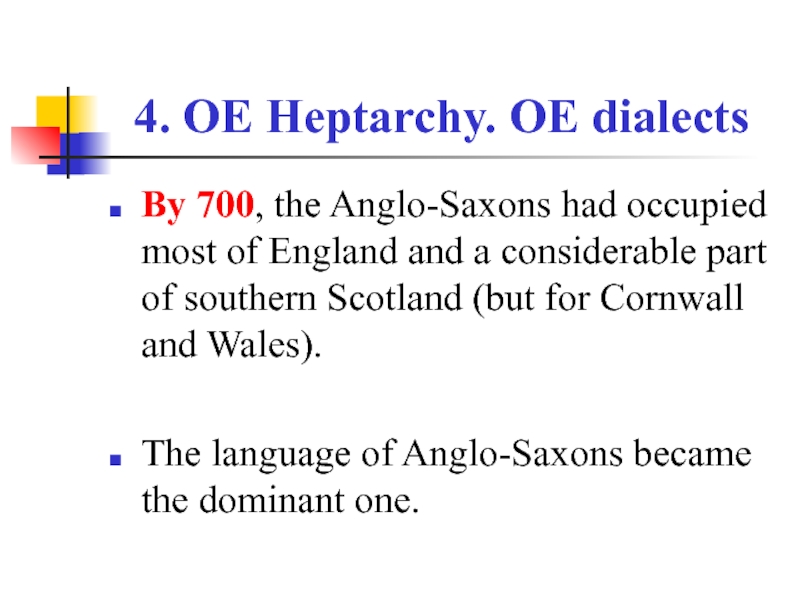
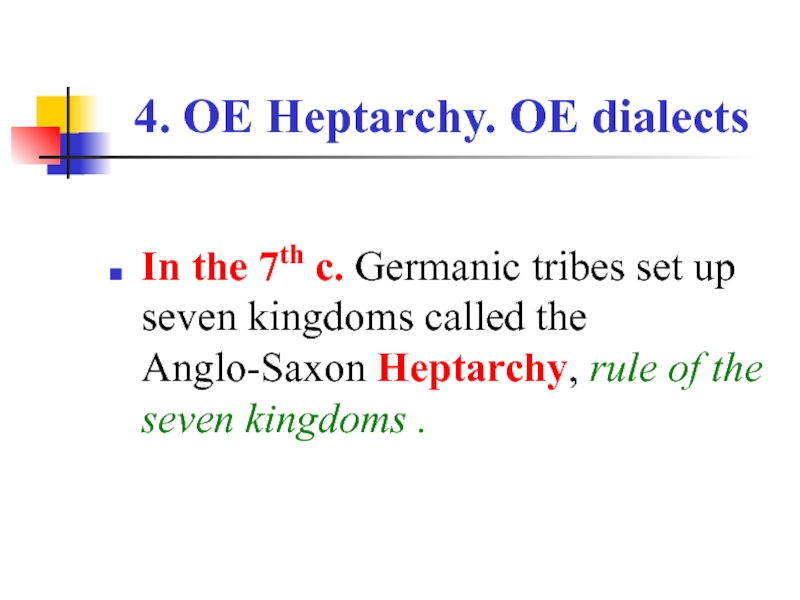
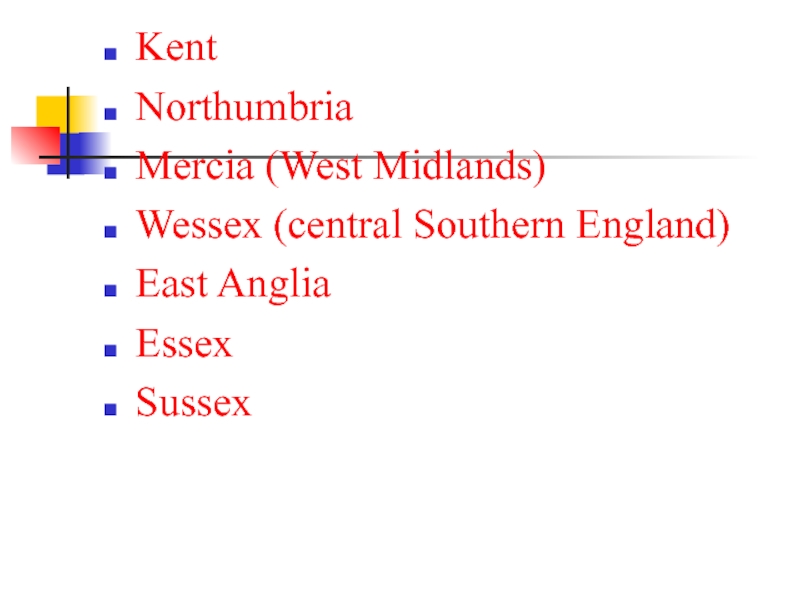
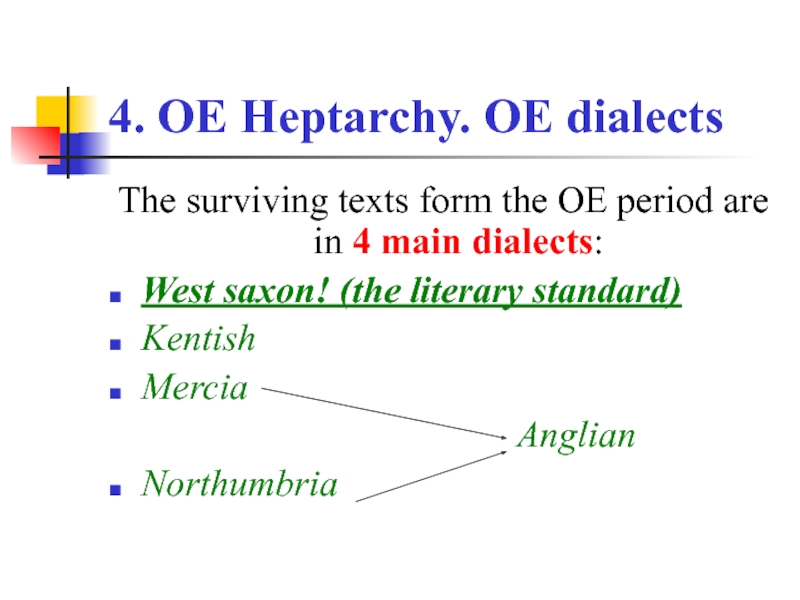
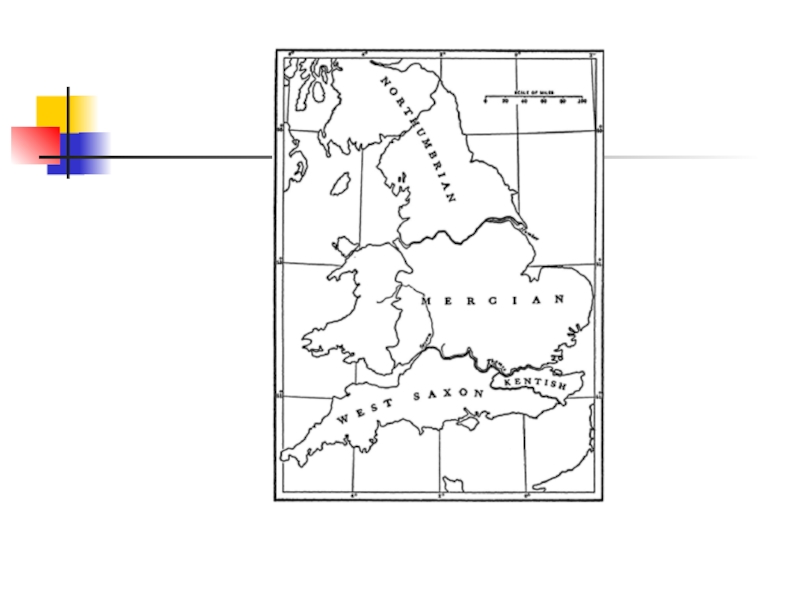
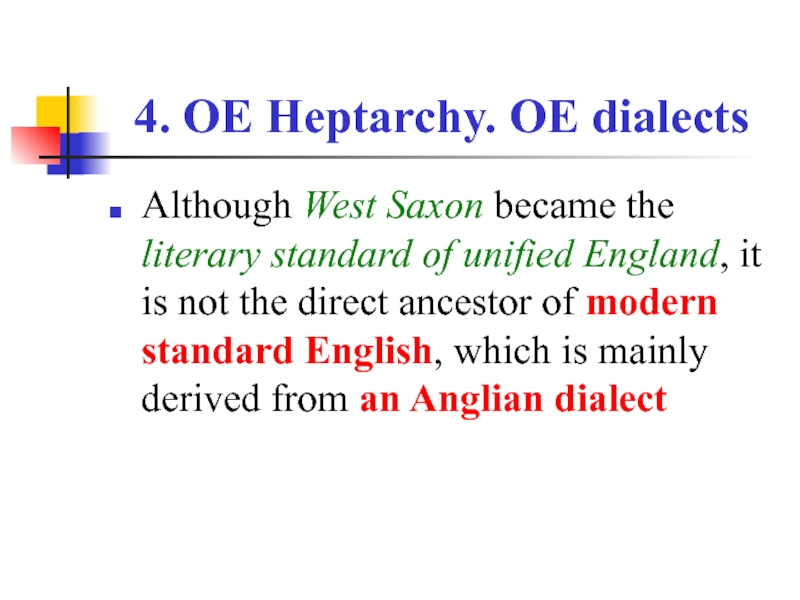
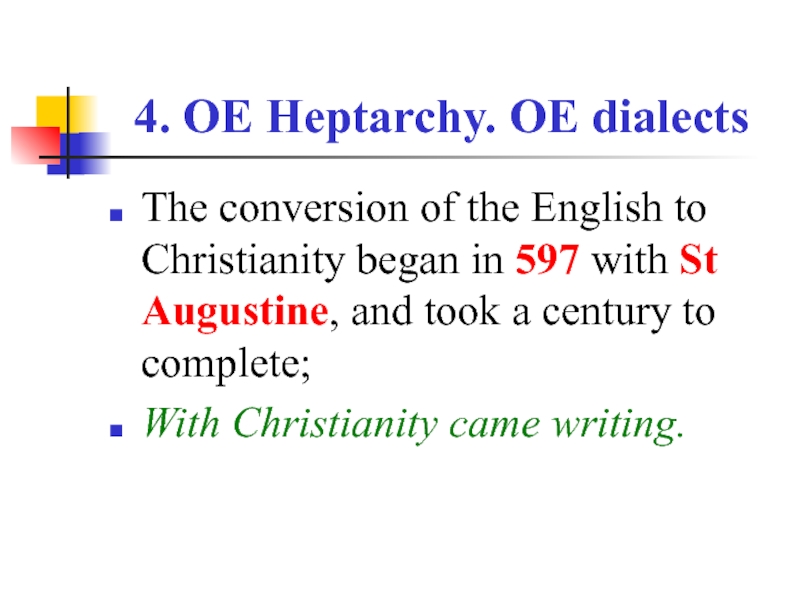
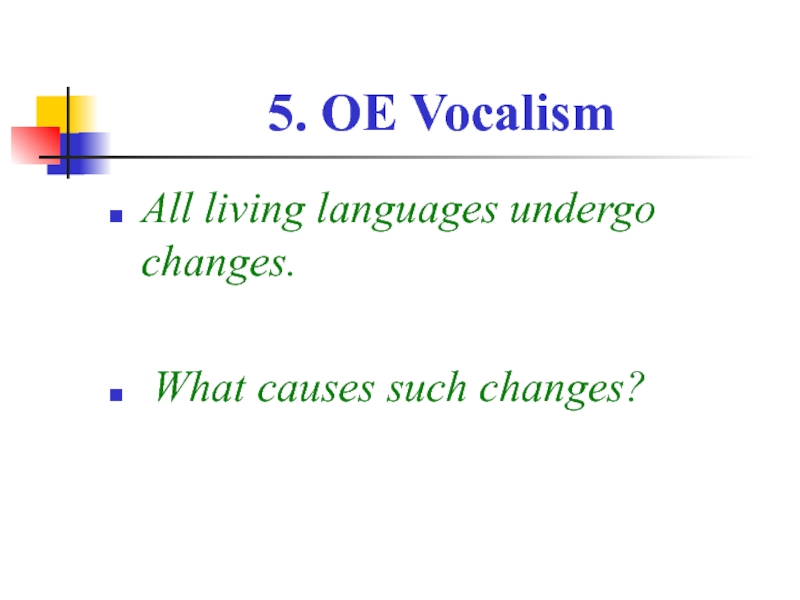
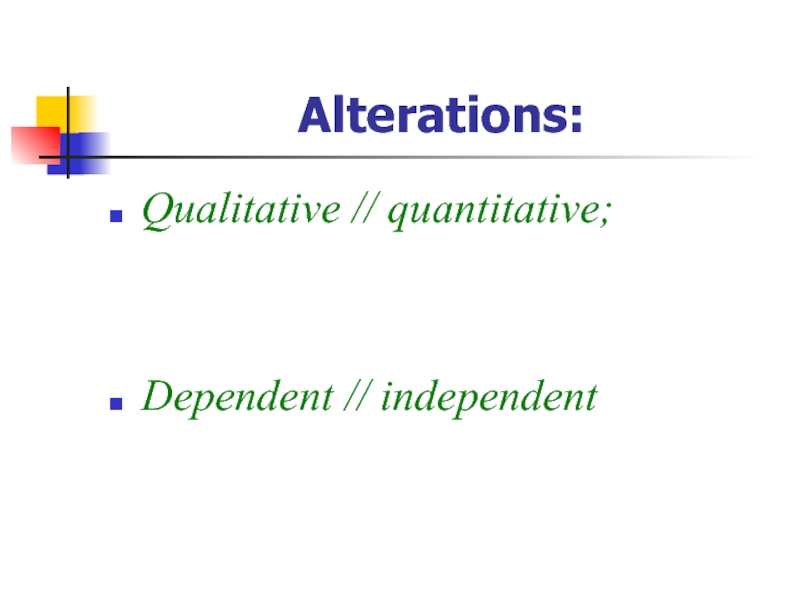
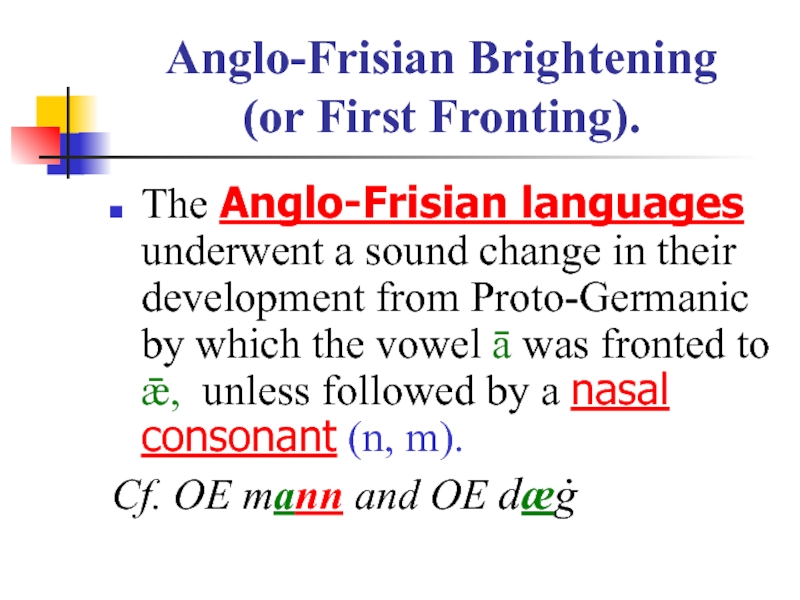
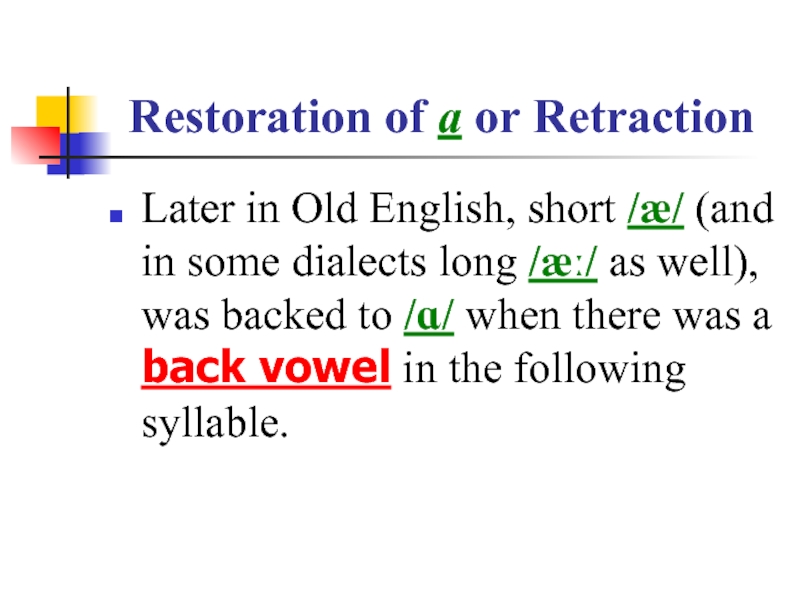
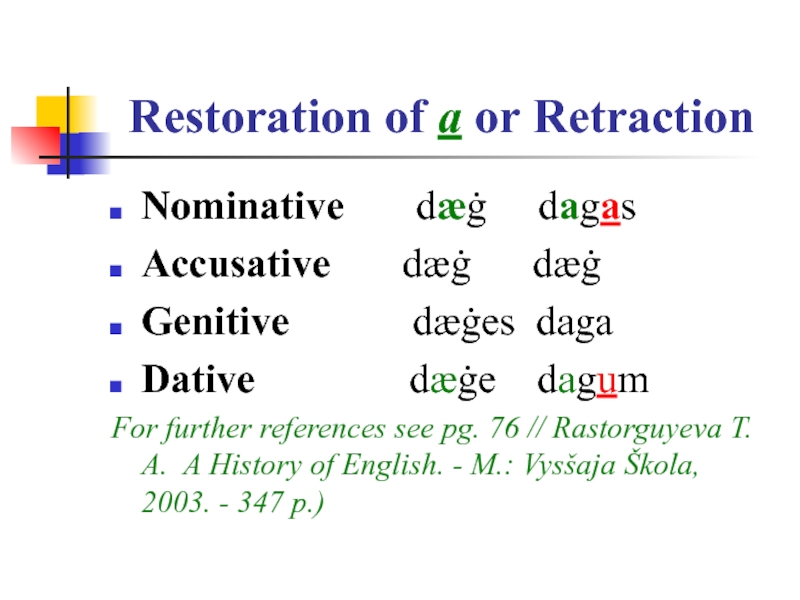
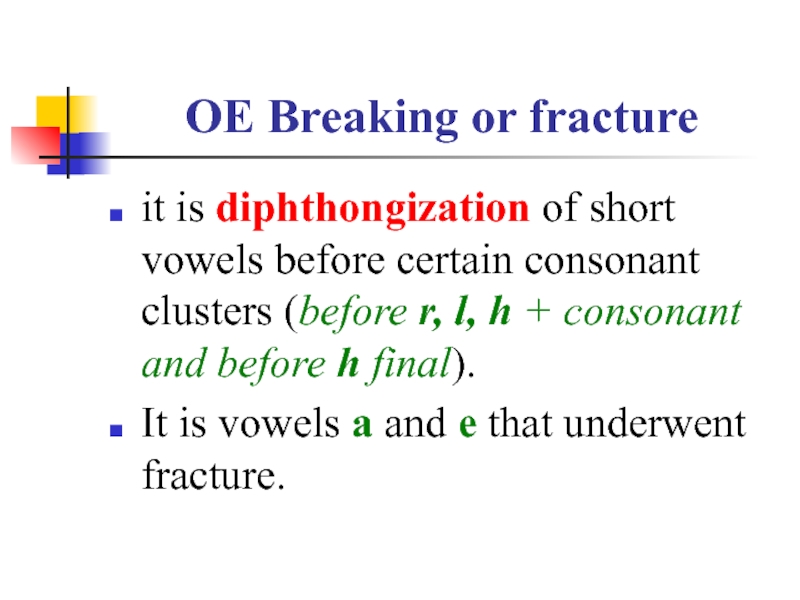
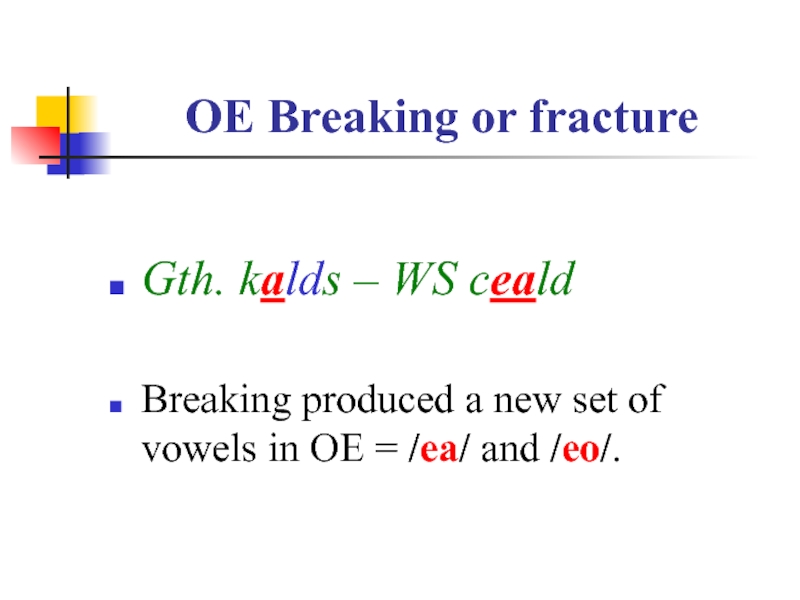
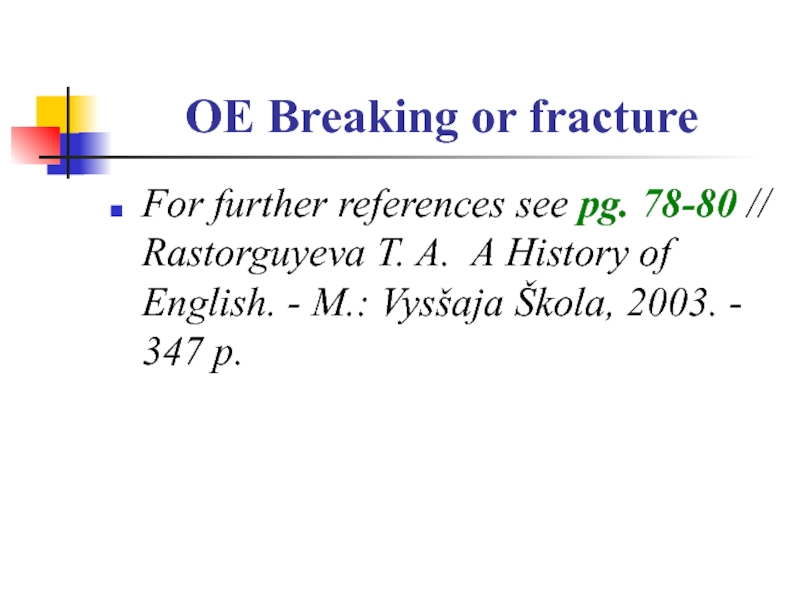
![Palatal diphthongizationOE vowels also change under the influence of the initial palatal consonants ʒ [j],](/img/tmb/5/431600/15a1bab96b2f42295ddd6d7a6d78d74c-800x.jpg)
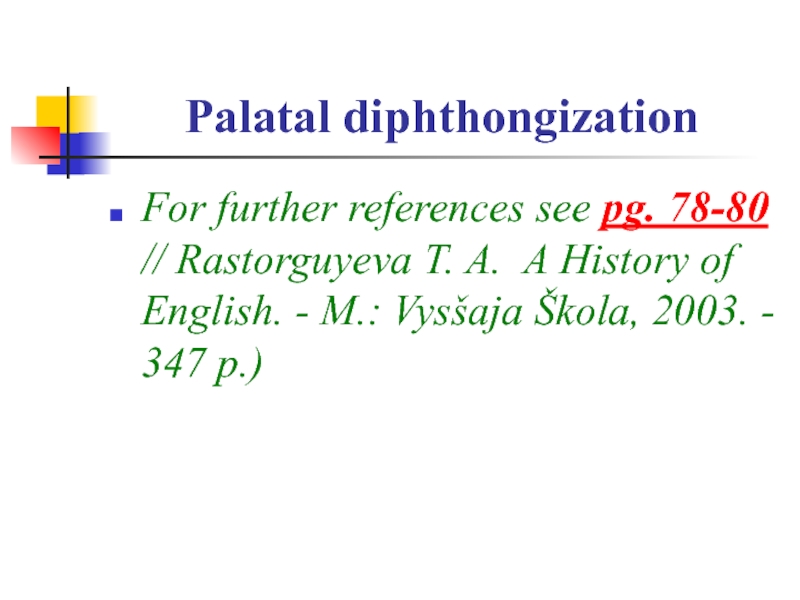
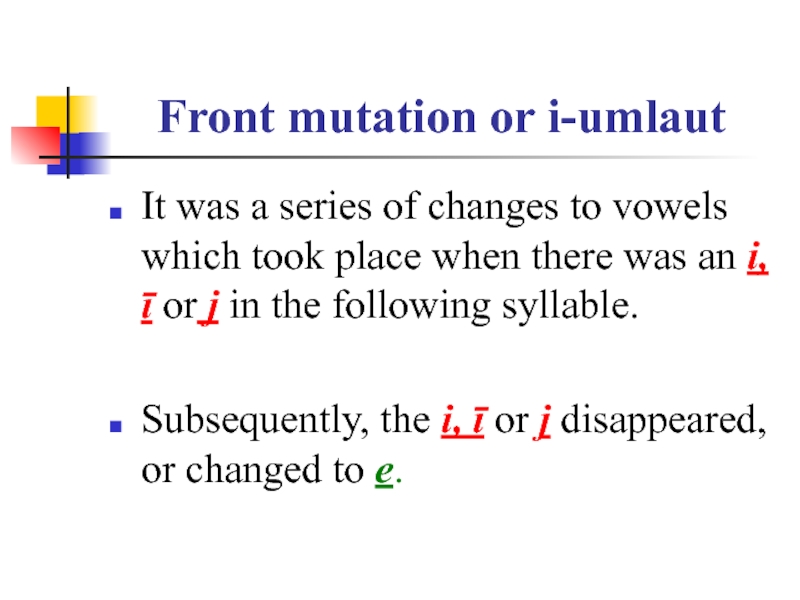
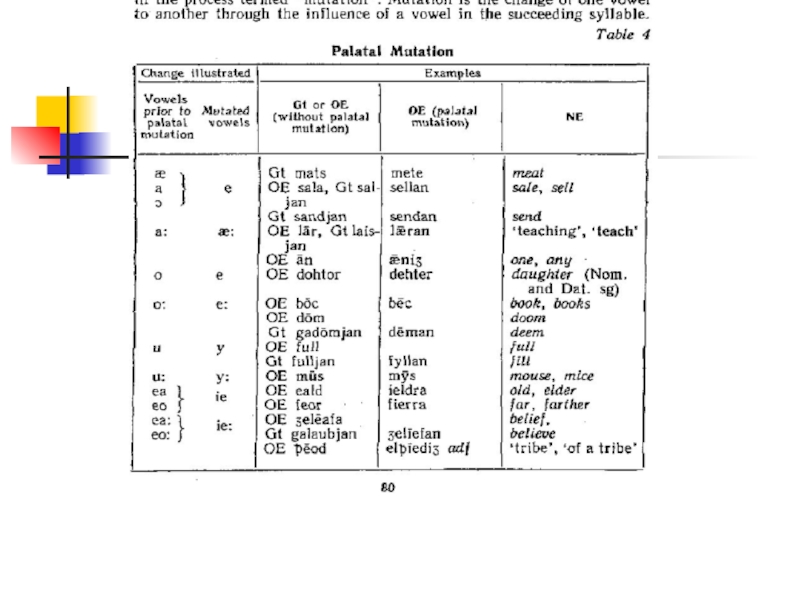
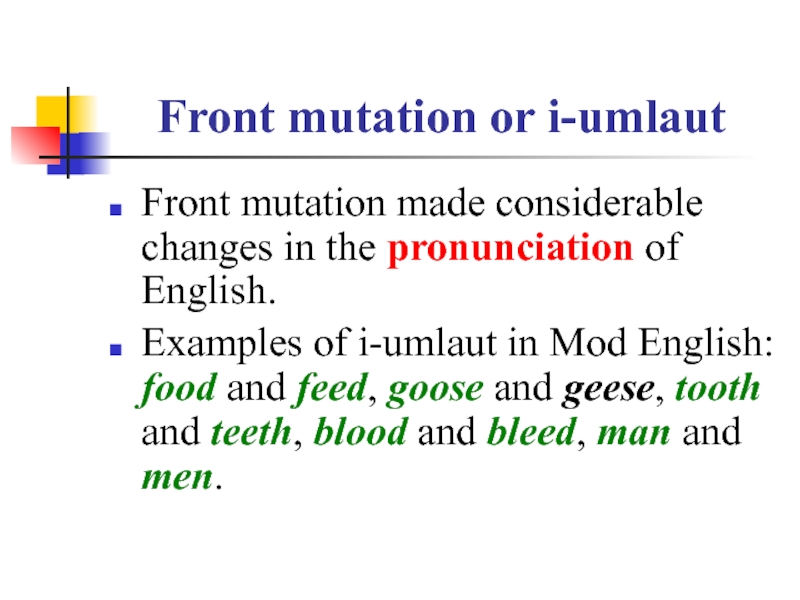
![Front mutation or i-umlauti-umlaut led to the appearance of new vowels:[y] and [y:] arose from](/img/tmb/5/431600/d42d511e68200dfe65d93f3c3b7570e5-800x.jpg)
